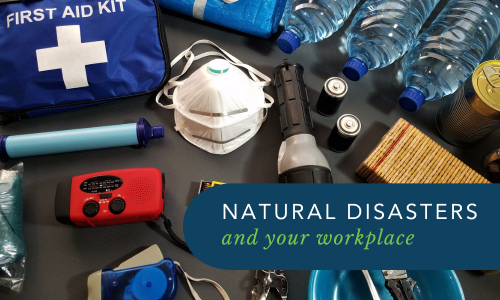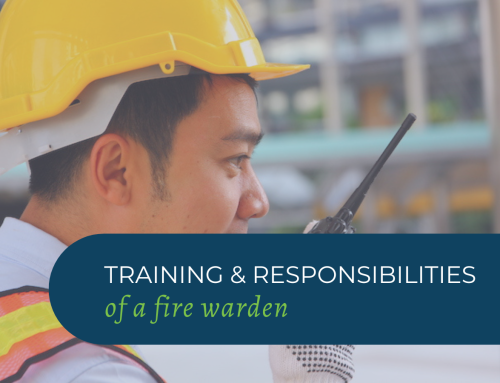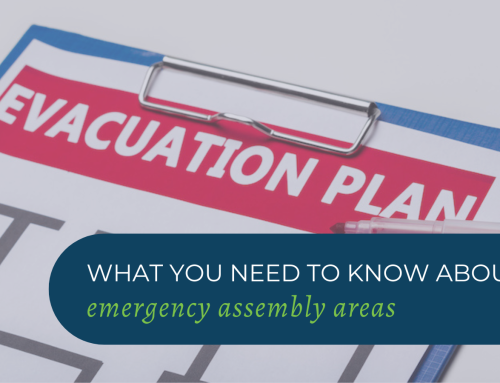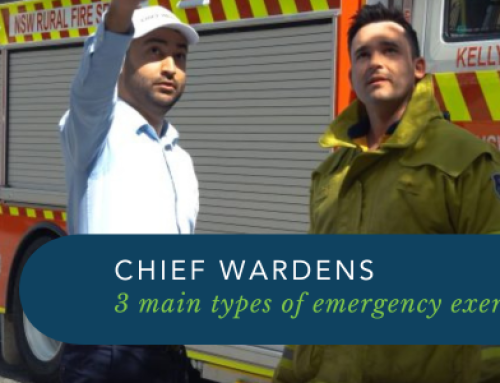Handling Natural Disasters in the Workplace: Be Prepared, Stay Safe
Natural disasters can strike at any time, and being prepared is crucial, especially in a workplace setting. Whether it’s bushfires, floods, earthquakes or cyclones, Australia is no stranger to these events. So, let’s dive into some practical tips on how to handle natural disasters in the workplace and ensure everyone’s safety.
Know Your Risks
First things first, it’s essential to understand the specific natural disasters that could affect your area. For instance, if you’re in a bushfire-prone region, your emergency plan will look different from a workplace in a flood zone. Do a bit of research and identify the risks relevant to your location.
Develop a Comprehensive Emergency Plan
An effective emergency plan is your best defence against natural disasters. This plan should include:
- Emergency Response Procedures: facility specific procedures that allow your ECO to respond effectively in an emergency.
- Evacuation Routes: Clearly marked and easily accessible routes for a quick and safe exit.
- Emergency Contacts: A list of key contacts, including local emergency services and internal emergency coordinators.
- Emergency Control Organisation (ECO): identified staff who will coordinate the response across the workplace.
- Communication Protocols: How you’ll communicate with employees during and after the disaster. Consider using multiple channels like emails, texts, and an emergency notification system.
Regular Training and Drills
It’s not enough to have a plan; everyone needs to know it inside out. Regular training sessions and drills are vital. These exercises help employees understand their roles and responsibilities during an emergency. Plus, they can highlight any areas for improvement in your plan.
Equip Your Workplace
Make sure your workplace is equipped with the necessary resources and equipment to handle a natural disaster incident. This includes:
- First Aid Kits: Fully stocked and easily accessible.
- Emergency Kits: Items like flashlights, batteries, blankets, and non-perishable food.
- Fire Safety Equipment and Smoke Alarms: Regularly checked and maintained.
- Communication equipment: enough variety of methods to allow effective communication across the facility
Stay Informed
Keep an eye on weather forecasts and alerts from local authorities. Having a reliable source of information can give you a heads-up before a disaster strikes. Apps (Hazards Near Me and specific Emergency Services) and websites from the Bureau of Meteorology are great resources for real-time updates. Emergency Plus App is a great way to ensure you can contact emergency services when needed.
Post-Disaster Procedures
Once the immediate danger has passed, it’s time to focus on recovery. Here are some steps to consider:
- Check for Injuries: Ensure everyone is safe and provide first aid if necessary.
- Assess Damage: Conduct a thorough inspection of the workplace for any damage.
- Support Employees: Offer support to employees who may be affected by the disaster, both physically and emotionally. This could include counselling services or flexible work arrangements.
Review and Update Your Plan
After every drill or actual emergency, take the time to review and update your emergency plan. Gather feedback from the ECO and other employees and make necessary adjustments to improve your preparedness.
By taking these steps, you can create a safer workplace and ensure that everyone knows what to do when a natural disaster strikes. Remember, preparation is key, and staying informed can make all the difference. Stay safe, everyone!
Need help preparing your workplace? Get in touch with our friendly team today!
GET IN TOUCH
Are you ready for peace of mind that your workforce is as safe and prepared as possible?
With a dedicated team of staff ready to help you meet compliance requirements and improve the overall safety of your workplace, all you need to do is get in touch.
Request your free audit today!



